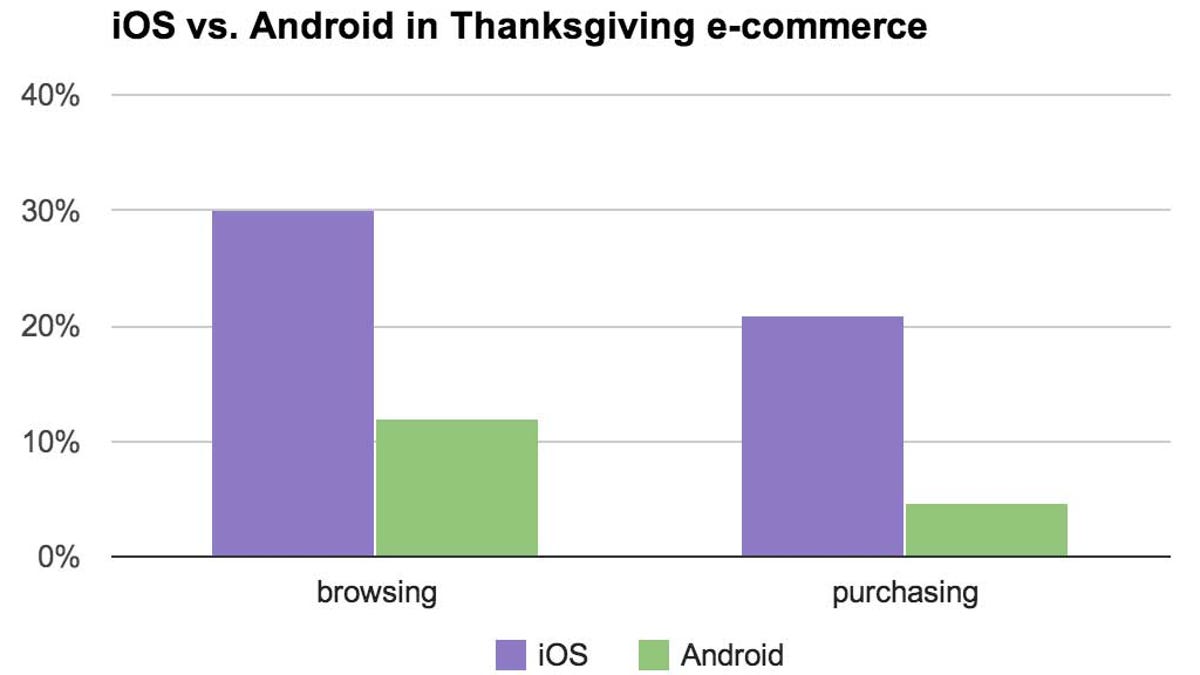Tablets outdo phones when closing holiday-shopping deals
For online shopping, smartphones are good for browsing but tablets are used more when it's time to make a purchase. Also, iOS outdoes Android.

When it's time to actually spend the money in the mobile-device era, tablets were used 55 percent more often than phones during Thanksgiving-day shopping.
Traffic from phones outpaced that of tablet for browsing sites, with phones accounting for 26.6 percent of visits compared with 15.3 percent for tablets, according to IBM data harvested from 800 retailers' e-commerce sites. But for purchasing, tablets were used 83 percent more often: Tablets were used for 16.5 percent of purchases compared with 9 percent for phones.
The mobile era is no longer a novelty, but the tech industry and customers are still adjusting to phones and tablets that have much of the power of a personal computer from earlier days.
Mobile devices accounted for 42.6 percent of online traffic, an increase of 32 percent compared with last year. Mobile sales grew even faster, up 49 percent and accounting for 25.8 percent of purchases, IBM said.
As tablets grow more powerful and acquire detachable keyboards, though, the line separating them from personal computers is getting blurrier.
iOS was more actively used than Android in IBM's data, a trend that's common for mobile-device activity in general.
Specifically, iOS devices accounted for 21 percent of sales whereas Android devices accounted only for 4.6 percent, IBM said. iOS users spent more, too -- $122 per order versus $106 for Android.
And site traffic from iOS was higher -- 30 percent compared with 12 percent for Android.
Big Blue also studied which sites referred traffic to the online sales. There, Facebook outdid Pinterest. A Facebook referral was 2.8 times more likely to result in a sale, and the average order was worth $106 for a Facebook referral and $103 for a Pinterest order.

